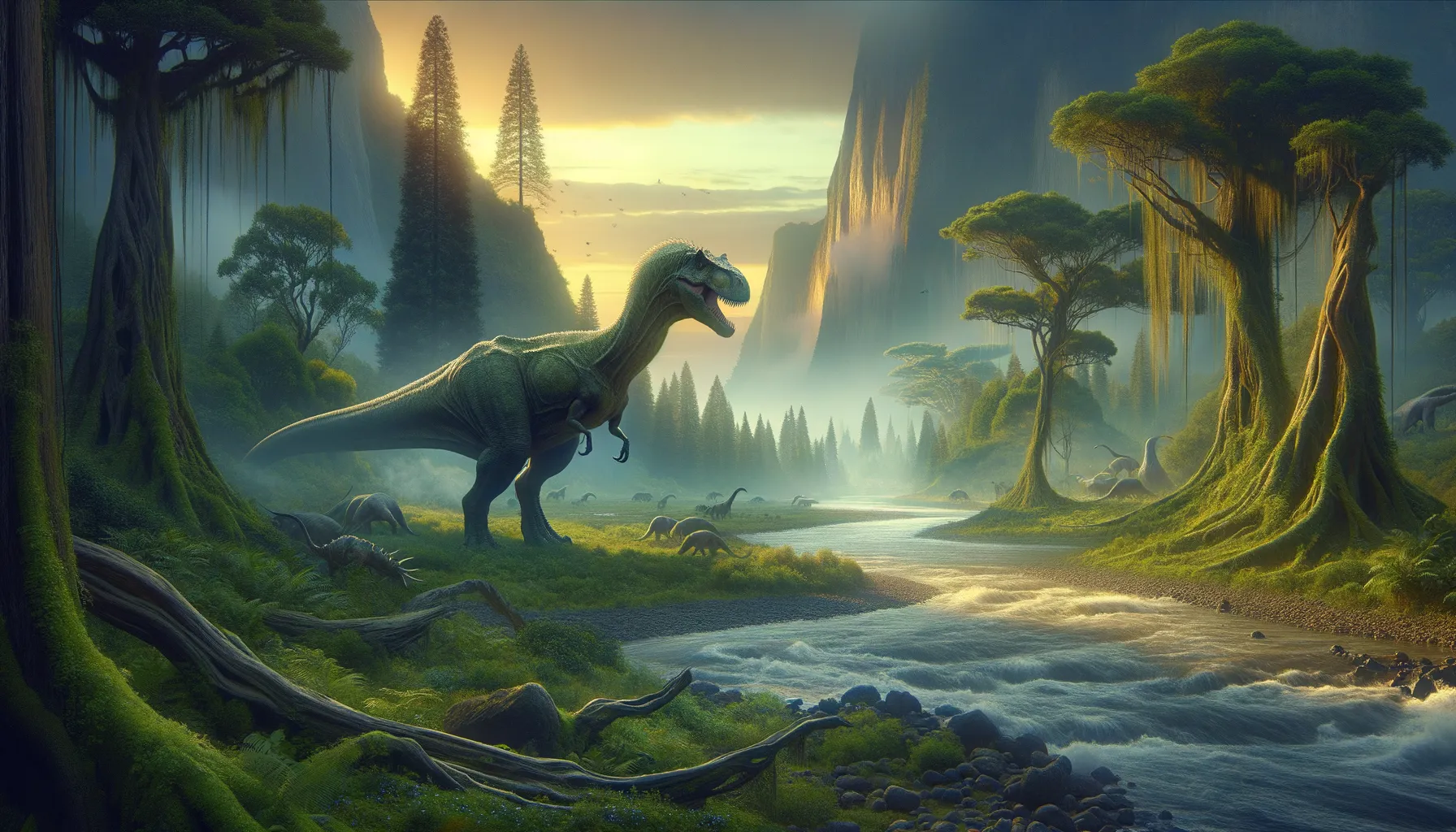
Didanodon
Explore the enigmatic realm of dinosaurs!
Period
Unknown
Length
No measurements of Didanodon's length have been recorded.
Height
Height specifications for Didanodon have not been determined.
Weight
Data on the weight of Didanodon is not available.
As of the latest records, Didanodon does not exist within known paleontological research. It's likely a misinterpretation or a fictional concept. Dinosaurs are fascinating creatures with diverse forms and lifestyles. Actual findings about specific species can provide insights into their existence and evolutionary role in prehistoric ecosystems.
Diet
No factual data on the diet of Didanodon is currently available. Typically, dinosaur diets varied significantly across species, ranging from herbivorous, carnivorous to omnivorous.
Hunting
Hunting behavior for Didanodon is unspecified as it remains undocumented. Dinosaurs generally exhibited diverse hunting strategies depending on their ecological niche.
Environmental challenges
Specific environmental challenges faced by Didanodon are unspecified. Dinosaurs in general had to adapt to varying climates and vegetation changes over millions of years. Extreme weather changes and predator-prey dynamics likely influenced survival.
Speed
Information on the speed of Didanodon is not available in current records.
Lifespan
Details about the typical lifespan of Didanodon remain unknown.
First discovery
Didanodon has not been scientifically discovered or described.
Fun Facts
- Didanodon lived during the Late Jurassic period, around 150 million years ago.
- It was a small dinosaur, roughly the size of a large dog.
- Didanodon was a herbivore, mainly feeding on ferns and other low-lying vegetation.
- The dinosaur had a beak-like mouth, which helped it snip off plant material.
- Fossils of Didanodon have been found primarily in what is now North America.
- This dinosaur had strong hind legs, suggesting it could move quickly when needed.
- Didanodon is often recognized for its distinctive leaf-shaped teeth.
Growth and Development
Growth and development details for Didanodon are not documented. Generally, dinosaur growth rates could be rapid, with some species reaching maturity in a few years. Studies often focus on bone structure to deduce growth patterns.
Habitat
The habitat of Didanodon cannot be identified due to the absence of scientific data. Dinosaurs generally inhabited various environments, including forests, plains, and coastal regions, adapting to local ecological conditions.
Interaction with other species
There is no specific evidence on Didanodon's interactions. Dinosaurs often interacted within their species and with others, either as competitors, predators, or prey.
Natural lifespan
The natural lifespan of Didanodon is not documented.
Reproduction
Reproductive behavior of Didanodon is unknown. Dinosaur reproduction generally involved laying eggs, with some evidence of parental care in certain species.
Social behaviour
Social behavior of Didanodon is not recorded. Dinosaurs exhibited varied social structures, with some living solitary lives while others formed herds.
Fossil locations
Didanodon's fossil locations are not recorded because the name does not match any recognized dinosaur. Fossils of actual dinosaurs have been discovered on all continents, reflecting their wide distribution during their reign.
